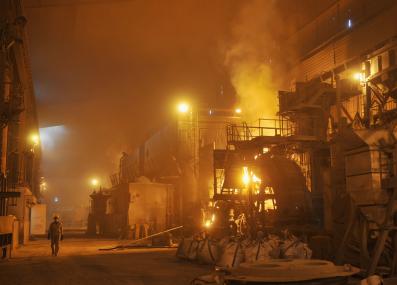Have a question?
Can wind turbines be recycled?
Some parts, like the steel towers and electrical components, can be recycled. The big blades are more complicated.
July 23, 2023
Wind turbines are built to last, and for good reason: they’re meant to endure whatever nature throws at them as they spend decades standing in the breeze, turning it into clean renewable energy. But when turbines reach the ends of their lives, that ruggedness can be a problem. Jeremiah A. Johnson, the A. Thomas Guertin Professor of Chemistry at MIT, says the way turbine blades are constructed makes it difficult to recycle them—which is why, often, they’re simply thrown away.
Johnson, who studies the recyclability of engineering plastics like those used to make wind turbines, says some parts like the electrical components and wiring could be recycled when a turbine completes its 20 to 30 years of operation. But the big blades often remain a problem. They are typically made of a material called a thermoset, a kind of resilient, “cross-linked” polymer in which all the molecules in the material are covalently bonded to one another. “It's essentially one giant molecule,” he says. “Every atom is connected through a 3D network.”
That strength makes these thermosets tough enough for high-tech, high-performance applications where the pieces must survive in the elements, like aircraft parts and wind turbines. But, Johnson says, there is still no good way to recycle this kind of material. “The primary thing you can do is burn it,” he says. “But there's no way to melt it down and remold it into its original components like most other plastics.” As a result, he says, most old turbine blades are landfilled.
Another issue is the “filler.” Inside the plastic exterior, a turbine blade is filled with a material to reinforce it, typically fiberglass. But the fiberglass could only be recycled by first breaking down the tough thermoset coating.
“Some folks in industry care less about recycling the plastic part of the turbine blade,” Johnson says. “It's that fiberglass filler that they'd love to get back because it's more expensive than the polymer part. And fiberglass production is a high-energy process, so it would be good to reuse it from a climate perspective as well.”
Johnson is a member of a research center sponsored by the Department of Energy that is developing new ways to recycle thermosets like those used in turbine blade materials. He is working on new ways to make thermosets with certain chemical bonds that could be easily and selectively cut when the blade reaches the end of its 30-year lifespan, allowing the thermoset materially to be broken down chemically—though this technology is not out in the field yet.
Other researchers are working on ways to make blades out of more easily recyclable plastics, but still have them be strong enough to do their jobs. “Rather frequently, I'll see a news headline in my Google feed announcing a recyclable wind turbine blade,” Johnson says. “Usually, if you look at the details, they've made a wind turbine blade out of a thermoplastic, which is a more traditionally recyclable type of polymer where the molecules aren't covalently attached to each other. So like a plastic bag—you can heat it up to a certain temperature, it'll melt into a liquid, and then that liquid can be reformed into other objects.”
One day, innovations like these may give us nearly waste-free wind turbines. For now, the rapid growth of wind energy does leave behind some unrecyclable pieces. Still, there is no such thing as waste-free energy, and the climate-warming fossil fuels that wind turbines replace also have serious waste issues, such as oil spills, toxic mine tailings, and ash from burning coal. As the world works to address climate change by transitioning from these fuels to clean energy like wind and solar, we have a chance to redesign our energy system to produce far less waste than we have in the past.
Thank you to Carlo Sebok of Rio de Janeiro, Brazil, for the question.
Submit your own question to Ask MIT Climate
Get the latest from Ask MIT Climate monthly in your inbox








